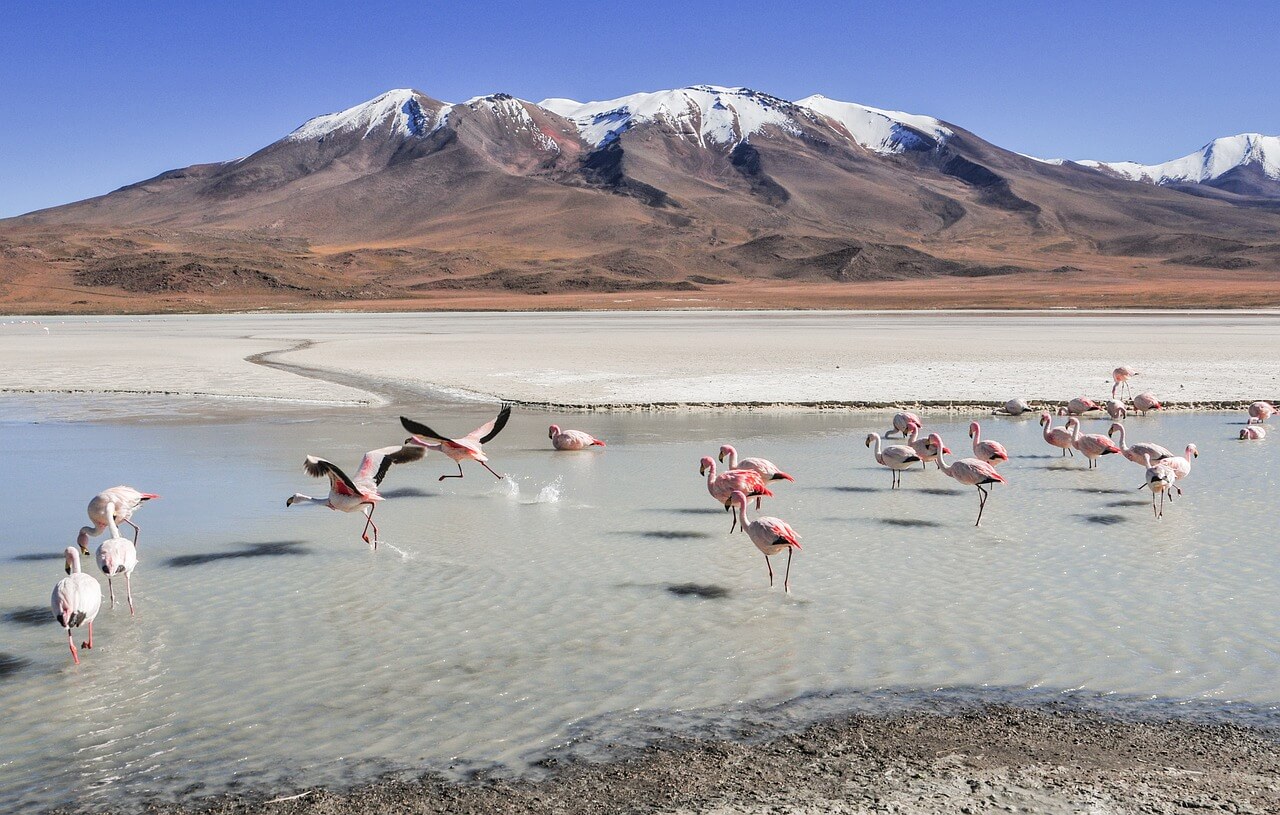When to visit Bolivia during the year?
Bolivia's diverse geography leads to varied climates that significantly influence tourist seasons. The dry season from May to October is ideal for trekking and outdoor activities, especially in locations like La Paz and Uyuni's salt flats. Summer (December to February) is great for exploring the Amazon rainforest, while spring and autumn offer pleasant weather for visiting cultural sites. Winter is perfect for high-altitude destinations, where crisp air enhances experiences in places like Potosí and Sucre.
How to get to Bolivia?
Getting to Bolivia can be an adventurous journey, with multiple transport options available. Major international airports in the country include El Alto International Airport near La Paz and Viru Viru International Airport in Santa Cruz. Flights connect Bolivia with various continents, making it accessible to global travelers.
- Main airports include El Alto and Viru Viru, with flights from major international hubs: New York (JFK), Madrid (MAD), São Paulo (GRU), Buenos Aires (EZE), and others.
- Low-cost airlines like Amaszonas operate within the region.
- Typical flight times are around 10-12 hours from North America and 3-4 hours from neighboring South American countries.
- Main bus stations are found in La Paz, Santa Cruz, and Sucre.
- Buses connect major cities, including routes from La Paz to Cochabamba and Santa Cruz.
- Bolivia has limited international train routes, with most travel occurring internally.
- Notable routes include the Andean Explorer connecting Oruro and Uyuni.
- Main highways include the Ruta 1 (Pan-American Highway) connecting various regions.
- Distances from major cities range from 1,500 km from São Paulo to La Paz.
- Road conditions vary; be prepared for tolls and occasional poor pavement.
Tourist activities in Bolivia
Bolivia is a treasure trove of unique activities catering to various interests. Here’s a breakdown:
- Adventure & Nature: Trekking the Inca Trail to the ruins of Khunara, hiking in Sajama National Park, or exploring the stunning landscapes of the Salar de Uyuni.
- Culture & History: Discovering pre-Columbian artifacts in Tiwanaku, visiting the historic city of Potosí, and participating in the colorful Carnival of Oruro.
- Wildlife & Ecology: Exploring the biodiversity of Madidi National Park and taking boat tours on the Amazon River.
- Cultural Experiences: Enjoying local festivals, visiting indigenous communities, and tasting traditional Andean cuisine.
Each region of Bolivia offers distinctive experiences, ensuring every visitor finds something captivating to do.
Accommodation in Bolivia
Bolivia offers a range of accommodation options suited for every budget. In major cities, travelers can find everything from luxury hotels in Santa Cruz to affordable hostels in La Paz. Average prices per night can vary from $10 for a dormitory bed to $200 for high-end hotels. Popular areas include seedier accommodations in cities like La Paz and Sucre, where homestays and boutique hotels blend local culture with comfort. Peak tourist seasons can see price hikes, particularly around Carnival, so it's wise to book in advance for the best deals.
Food in Bolivia
Bolivian cuisine is a flavorful reflection of its diverse culture and regions. Signature dishes include salteñas (savory pastries), pique a lo macho (a meat and potato dish), and quinoa salad. Wash it down with chicha, a traditional fermented drink. Dining in cities like La Paz and Cochabamba can cost around $5-10 for a hearty meal, while fine dining might set you back $25-50. Don't miss local markets to sample street food and family-run eateries, where authentic flavors shine.
Important numbers and information
- Emergency services: Police - 110, Ambulance - 118, Fire brigade - 119.
- Embassy contacts: US Embassy in La Paz - +591-2-216-8000.
- Main airports: El Alto International Airport (La Paz) - Av. 12 de Octubre, La Paz.
- Currency: Boliviano (BOB); common payment methods include cash and local debit cards.
- Visa: Check requirements for your nationality, typically a valid passport is needed.
What to see in Bolivia?
Bolivia boasts an array of stunning sights, reflecting its rich history and natural beauty:
- La Paz: The world’s highest capital, known for its dramatic landscapes and vibrant street life.
- Uyuni: Famous for the Salar de Uyuni, the largest salt flat in the world, offering otherworldly photos.
- Tiwanaku: Ancient ruins that provide insight into pre-Columbian cultures.
- Cochabamba: Celebrated for its year-round spring-like climate and the stunning Cristo de la Concordia statue.
- Rurrenabaque: Gateway to the Amazon, ideal for ecotourism and wildlife watching.
Each destination provides a unique flavor of Bolivia’s diverse landscape and cultural richness.
History, geography and climate
Bolivia's history is a tapestry of indigenous civilizations, Spanish colonization, and a struggle for independence. The country's geography is characterized by high mountain ranges such as the Andes and expansive lowland areas like the Amazon rainforest. Moreover, the climate varies greatly—from the cool highlands to the tropical jungles. Average temperatures can range from below freezing in the mountains to tropical heat in the Amazon. This diversity not only shapes the country's ecosystems but also its cultural heritage.
Population and culture
With a population of approximately 12 million, Bolivia is a melting pot of cultures. Over 30 indigenous languages are spoken, with Spanish being the official language. The majority practice Catholicism, blended with traditional beliefs. Cultural traditions are vibrant, with colorful festivals such as Carnaval de Oruro, showcasing dances and elaborate costumes. Unique features include musical styles like Andean folk music and traditional weaving techniques that reflect the country's deep-rooted heritage.








